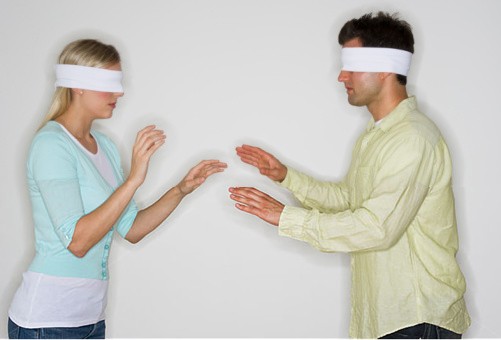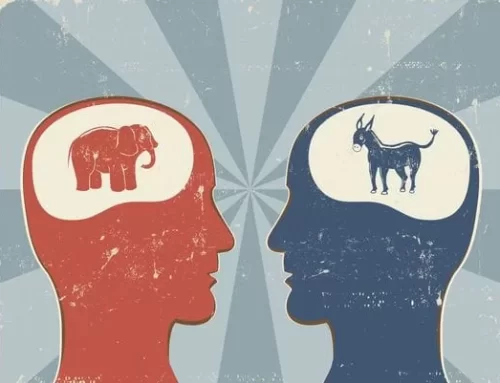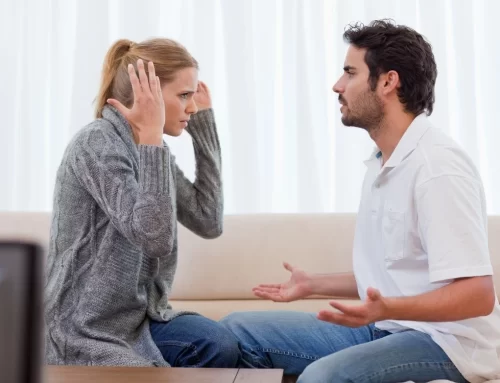While doing marriage counseling with Orange County couples, I often see them struggle to stay connected with a current conversation because they become triggered by fears of losing connection with their partner. When that happens, all current reality is lost and they both spin off into a “virtual reality” of fears that cycle around and around as both trigger the other’s fears of lost connection and relationship. It reminds me of the movie, The Matrix.
In The Matrix, our future world has become desolate and destroyed and is run by computers and robots who provide people with their perfect virtual reality experience, which is a far cry from what is really around them. In exchange for this illusion, people lay lifeless, plugged into a cocoon with their energy siphoned away to power this artificial experience. The hero of the movie, Neo, comes out of his cocoon to fight back against the computers and restore the real world. In the process, he learns how to move within this virtual digital world and use it to his advantage. Neo can’t stop it, but he has found out how to see into this digital virtual reality and use the streams of computer data to slow it down and even manipulate it for his cause. In the image for this article, bullets are fired at Neo that he then is able to stop mid-flight and pick out of the air. He can’t stop bullets from being fired at him, but he is no longer overwhelmed or powerless to address the situation. What if couples could look into their fearful reactive cycles in a way that would allow them to slow it down and work on these patterns.
I came across a diagram based on Emotionally Focused Therapy that did an excellent job of showing the patterns of fear and reactivity that keep couples disconnected and stuck in their “virtual reality.” Seeing the negative reactive cycles that play out can help sidestep these patterns and give a language for the desires of connection that are underneath these fearful patterns. I modified the original diagram to make it clearer and to provide space on the diagram for each partner to fill in their typical fears, patterns, and desires. So, let me explain the cycle.
In all relationships, there is a desire for secure emotional connection with our partner. People want to be loved, accepted and feel a safe connection with others. When there have been problems or pain in getting this kind of connection with others, the desire for connection becomes mixed with insecurities and fears about getting and keeping a secure connection with others. It’s important to note that those fears likely started in important relationships early on in life, then get exacerbated in the relationships you are in now.
With this fear and insecurity in the mix, a person will be on guard for signs of losing connection with others. If there is a trigger or cue, real or imagined, that says the relational connection is about to be lost, a negative reactive cycle may begin. This is where familiar reactive feelings begin to be experienced in your body and emotionally, like a knot in your stomach, anxiety, anger, tight muscles etc. (step 1). That leads to “the story” about what you can expect from your partner, the relationship, and what is true about you (step 2). “The story” may be something like, “Nobody will ever love me,” “I drive people away,” “I can’t trust others to be there for me” etc. This will always be framed as a negative story. From “the story,” a person tries to cope with this painful disconnect by defending or protecting (step 3). They may get angry, pull away, fearfully cling to the relationship, blame the other’s shortcomings, explain why the other person should not be upset etc.. Unfortunately, one partner’s way of coping is often the very thing that is a trigger or a cue to the other partner and now that partner becomes fearful of losing connection. This, of course, often starts a negative reactive cycle in the partner that goes around and leads to a way of coping that re-triggers the first partner, and starts their whole cycle again. Around and around it can go as fear and the hurt of lost connection drives the defensive, protected negative reaction cycle. The net result of this is that the vulnerable primary emotions and need for secure emotional connection remains blocked and hidden from view. Kind of makes me think of what it’s like talking politics with people these days.
But what if one partner could say to the other, “I’m feeling distant or disconnected from you and I want to be closer and feel more secure with you.” These are vulnerable statements that invite the other person to a place where they can meet those needs and even express something similar for themselves. It just brings the whole negative reactive cycle to a screeching halt. How can you argue with someone who says they love you and want to be close and connected? If your partner said, “I see you are attacking me and pulling away. I wonder if you got triggered and felt like you were losing your connection with me? ” Well that would likely stop the cycle immediately. There may be a fear of vulnerability, but there is nothing to fight against or protect from anymore. When a couple becomes clear about the language they use to express desires for connection and closeness, they can use those words and ideas at any time to prevent a negative reactive cycle from starting or to side-step it when it is going on and turn the whole encounter into something connecting.
I’ve included the diagram as something you can download, print out and fill in for yourselves. I use this diagram often in my work as a marriage counselor with Orange County couples. I ask them to fill in the blanks for each of their cycles, then post it on the fridge or somewhere central that they will see frequently. The more it is seen, the easier it is to see the patterns when they start and be reminded of how to speak the language of connection to bring the negative reactive cycle to a halt.
So back to the movie, The Matrix. At one point, Neo has seen the stark reality and the challenge ahead and is given a choice. Take a blue pill and forever go back to a virtual reality and “believe whatever you want to believe.” Or, take the red pill and forever commit to living in reality. There is no way back to fantasy after his eyes are opened to the reality. In the movie, Neo is told that “many [people] are not ready to be unplugged, and many of them are so inured, so hopelessly dependent on the system that they will fight to protect it.” He chooses the red pill. Now that you have the tools to decode what is really happening in your relationship “matrix”, and build a connected relationship based in reality, what will you choose? While I may not be a super hero, as a psychologist I am equipped to decode and rework your relational matrix if you need a little extra help.









Leave A Comment